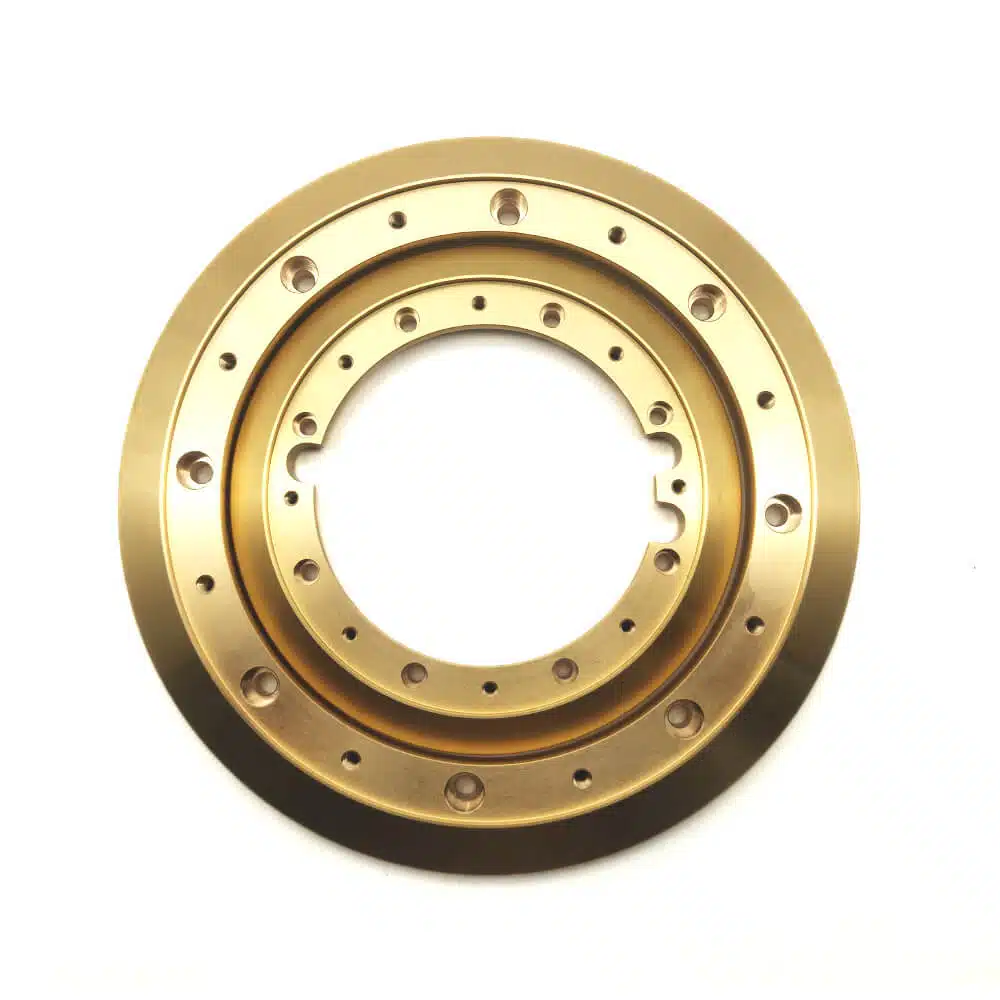Brass CNC Machining | AMSL CNC Parts
As a leading CNC machining manufacturer in China, AMSL is always your reliable selection. Whether you need superior brass CNC machining, aluminum, or steel machining services. AMSL team can guarantee the accuracy and lead time of your parts and after-sales.
Material Safety: high-quality raw material with a certificate from the material supplier
Economical Options: From design to processing, we always look for the economical way to achieve competitive unit parts.
Swift Response: Fast-tailored prototyping/processing samples and quotes.
Global Delivery: UPS, DHL, or FedEx courier or sea freight, train freight to air freight, and multiple options to your facility.

Save at least 30% or more for each order.

AMSL’s Brass CNC Turned Machining Parts Solutions
Explore our solutions for high-quality components.
At AMSL, we are consistently providing high-precision, high-performance quality parts with a good surface finish. Each of your projects is strictly processed with quality control system and produced with our top-notch CNC machineries.




Wholesale brass inserts for injection molding
Require high quality wholesale brass machining parts at AMSL. No matter they are standard or tailored, AMSL offers precision parts to meet your industry needs and standards.
- Thread inner diameter
- Outer diameter of thread
- Height for molded-in inserts
- Lead-free brass ends
- tolerance ±0.05mm
Brass CNC Machining—What Are The Four Types of Brass?
Typically Used for Brass CNC Machining
There are many grades of brass, each of which has its own unique composition, performance and properties. Result in suitable for different processing needs. Typically grades are C28000 (H62), C27000 (H65), C26800 (H68), C26000 (H70) etc.
As a widely used metal material, brass plays an important role in the machining field. So let’s talk about the following common grades of machining brass and their applications:
The Common Brass Grade and Its Characteristics
- C28000 (H62) brass: copper content of about 62%, the rest is zinc and other impurities. This grade of brass has good plasticity and processing performance, suitable for the production of ordinary mechanical parts and electrical parts.
- C27000 (H65) brass: About 65% copper; zinc content is moderate. This kind of brass has good strength and wear resistance, suitable for making parts that need certain strength and wear resistance.
- (H68) C26800 brass: with a copper content up to 68%, it is a high copper brass. It has high electrical and thermal conductivity and is suitable for electrical and electronic applications.
- C26000 (H70) Brass: Containing about 70% copper, it has high corrosion and wear resistance. This brass is suitable for making parts that work in harsh environments.
Selection and Application of Brass Grade
In the selection of brass grade, according to the specific processing needs and the use of the environment for comprehensive consideration. For example, for the need to withstand greater pressure and friction parts, you should choose the strength and wear resistance of the brass grade, and for the electrical and electronic applications, you need to choose the electrical conductivity and thermal conductivity of high copper brass.
In addition, the processing performance of brass is also one of the factors to be considered when selecting the grade. Different grades of brass in the cutting, welding, heat treatment, and other aspects of the performance are different, so according to the processing technology and equipment conditions, choose the appropriate brass grade.
Case Studies for Brass Processing Precautions.
When machining brass, we also need to pay attention to the following points:
- Cutting Processing: This process easily generates a sticky cutter phenomenon. So you must choose the appropriate cutting speed and feed to reduce the cutting force and heat accumulation.
- Welding Processing: Although brass welding performance is better, you need to pay attention to controlling the welding temperature and welding speed to avoid cracks and deformation.
- Heat treatment: Additionally, during the heat treatment process, brass is prone to oxidation and dezincification. So need to take appropriate protective measures, such as coating with an antioxidant.
In short, the machining of many grades of brass, choosing the appropriate grade to ensure the quality of processing and improve production efficiency, is of great significance. For practical application, according to the processing needs and the use of the environment for comprehensive consideration, and follow the corresponding processing precautions to ensure that the quality and performance of brass parts meet the expected requirements.
GB, JIS, DIN, UNS, and BS Standards of Brass Grades
The table below shows the different country standards of the brass grades comparison table:
| Common Brass | ||||
|---|---|---|---|---|
| GB | JIS | DIN | UNS | BS |
| H59 | C2800 | CuZn40 | C28000 | CZ109 |
| H62 | C2720 | CuZn40 | C27400 | CZ109 |
| H65 | C2680 | CuZn35 | C27000 | CZ107 |
| H68 | C2600 | CuZn30 | C26000 | CZ106 |
| H70 | C2600 | CuZn30 | C26000 | CZ106 |
| H80 | C2400 | CuZn20 | C24000 | CZ103 |
| H85 | C2300 | CuZn15 | C23000 | CZ102 |
| H90 | C2200 | CuZn10 | C22000 | CZ101 |
| H96 | C2100 | CuZn5 | C21000 | -- |
| Leaded Brass | ||||
| GB | JIS | DIN | UNS | BS |
| HPb59-1 | C3710 | CuZn40Pb2 | C37000 | CZ120 |
| HPb59-3 | C3561 | CuZn40Pb3 | C37710 | CZ121Pb3 |
| HPb60-2 | C3771 | CuZn39Pb2 | C37700 | CZ120 |
| HPb62-2 | C3713 | CuZn38Pb2 | C35300 | CZ119 |
| HPb62-3 | C3601 | CuZn36Pb3 | C36000 | CZ124 |
| HPb63-3 | C3560 | CuZn36Pb3 | C35600 | CZ124 |

